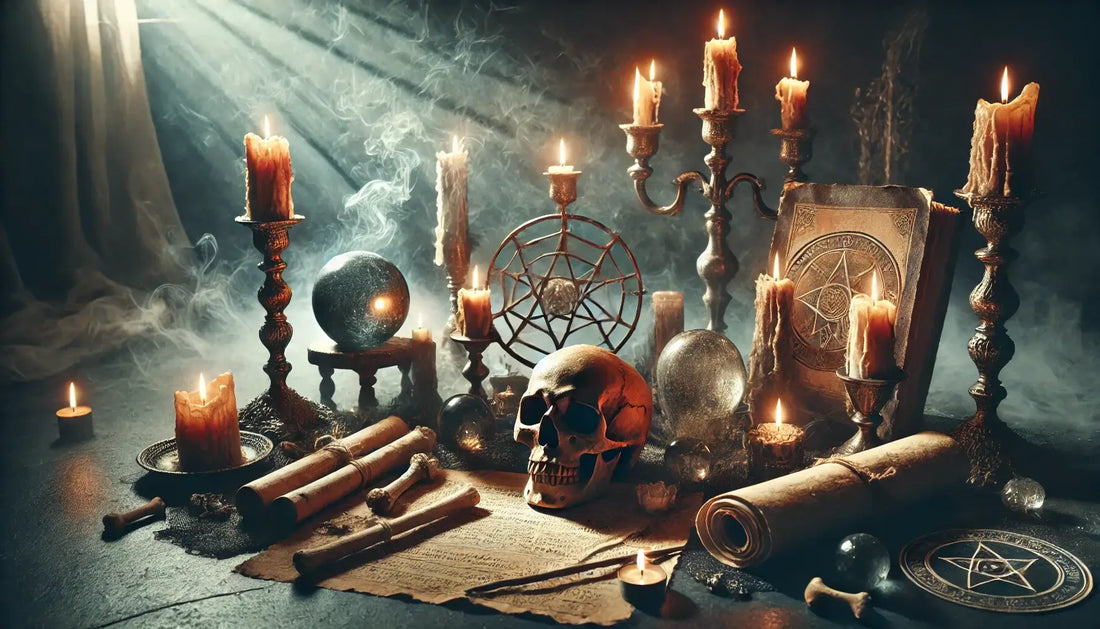
Introducing the World of Necromancy
Share
Necromancy, the art of communicating with the dead, is an ancient practice steeped in mystery and often misunderstood. While frequently associated with dark magic, necromancy has roots in various cultures, offering spiritual growth, emotional healing, and insights into the mysteries of life and death. This practice has endured through centuries, evolving from ancient rituals to modern spiritual guidance, making it both fascinating and controversial.
The Origins of Necromancy
Necromancy dates back to ancient Egypt, where it was believed the dead could offer wisdom to the living. The Egyptians revered the afterlife, and necromantic practices were used to connect with ancestors, seeking their advice and guidance on matters of the physical world. Similarly, the Greeks engaged in necromancy, with necromancers, also known as psychagogues, facilitating communication with the dead, particularly in times of need.
The practice evolved through the centuries, taking on new forms in medieval Europe. Unfortunately, during the Middle Ages, necromancy became heavily stigmatized and was equated with witchcraft and black magic. The Church saw it as an evil practice, leading to the persecution of those accused of necromancy. Despite this, secret practitioners continued to harness its power for personal insight and healing.
Modern Necromancy: A Controversial but Powerful Practice
In contemporary times, necromancy remains shrouded in mystery and fear, yet many practitioners view it as a legitimate spiritual path. Modern necromancers use the practice to connect with the dead for healing emotional wounds, gaining spiritual insight, and maintaining a connection with deceased loved ones. Necromancers emphasize that the practice is not about controlling the dead but about forming respectful connections with spirits for mutual growth.
Techniques Used in Necromancy
-
Mediumship Mediumship is the primary technique used in necromancy, where a medium communicates directly with spirits. A medium serves as a bridge between the living and the deceased, often receiving messages or insights from the other side. There are various forms of mediumship:
- Trance Mediumship: The medium enters a deep trance, allowing spirits to communicate through them.
- Mental Mediumship: The medium receives messages through thoughts, feelings, or impressions from the spirit world.
- Physical Mediumship: Spirits manifest through physical phenomena, such as sounds, objects moving, or temperature changes in the room.
-
Divination Necromancers also use divination tools like tarot cards, runes, and scrying (gazing into a reflective surface like water or mirrors) to connect with spirits. These tools help provide guidance and insight from the spiritual realm. Divination has long been used in various spiritual practices, from ancient Greece to modern-day Wicca, as a means of communicating with forces beyond the physical world.
Approaching Necromancy with Caution
Necromancy is not for the faint of heart, and it is essential to approach the practice with respect, caution, and clear intentions. Many modern necromancers recommend working under the guidance of experienced practitioners when first beginning. They emphasize that necromancy should never be used to manipulate or harm others but to heal, gain wisdom, and connect with the spiritual world.
The Power and Potential of Necromancy
Necromancy is a powerful and ancient practice that has been misunderstood throughout history. Although often associated with dark magic and fear, it holds immense potential for healing, guidance, and spiritual growth. Those who explore necromancy today do so to honor the dead, seek their wisdom, and deepen their connection to the unseen realms.
If you are interested in necromancy, remember that it requires careful consideration, an open mind, and respect for both the living and the dead. This is not a practice to be taken lightly, but when approached with the right mindset, it can offer profound insights and personal transformation.
